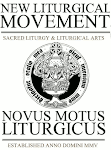
Father John Priestley Warmoll single-handedly brought Catholicism back to Bedford in the nineteenth century. Jack Robbins calls him the Apostle of Bedford and has self-published a book on his life and times. Because the book is self-published, there was no editor to restrain the author’s exuberance. The text contains many facts and will be of interest to anyone who is fascinated by Catholic history, but not all are relevant to the main point of the book.
There are many photographs, mainly of Protestant churches: Fr Warmoll was an Anglican minister before he became a Catholic; so were a number of his ancestors, another was a Congregationalist minister.
We meet him in chapter five; in chapter eight we become aware of his Catholic life when he is baptised sub conditione by Canon Henry Edward Manning, Provost of Westminster, when he received the name of John. Mr Warmoll had previously known the Canon as Archdeacon Manning; he was later Archbishop of Westminster and Cardinal.
After attending the Pian College (now the Beda) in Rome and ordination in 1863 in St John Lateran, Fr Warmoll was appointed to the pro-Cathedral of Northampton. At the time the diocese covered seven counties, had thirty-four churches, four convents and twenty-one priests. With so few priests, the newly ordained soon found themselves in charge of missions. So it was that in the year of his ordination Fr Warmoll was sent to establish a mission in Bedford. There was only one chapel in Bedfordshire at the time.
From chapter ten, the author charts the course of the Bedford Mission. Father Warmoll arrived in the town on Christmas Eve 1863 with two pounds in his pocket. His first Christmas Masses were celebrated in the small house of one of the few Catholic families in the town. Three rented rooms in a house formed the first mission building: an ill-furnished room for the priest to live in and the other two knocked into one to form a chapel.
To provide income for the mission, he wrote to the Catholic publications, The Tablet, The Universe and The Weekly Register. He pleaded, “Not only have we no chapel, schoolroom nor house in this town, but, at present, no means of obtaining them”. Many begging letters later, he was able to build a presbytery and chapel-schoolroom and celebrated the first Mass there on 31 March 1867. The mission territory was the whole of Bedfordshire; the other chapel in the county, at Shefford, was temporarily closed the same year Fr Warmoll opened his new building. People came from as far as sixteen miles away to hear Mass.
The numbers of Catholics increased, thanks to Fr Warmoll’s efforts, and the number of Catholic children over-flowed the schoolroom. Afraid the school inspectors might close the school, he began to build the Church of the Holy Child and St Joseph beginning with the sacristy so that it could be used as an extra schoolroom.
The foundation stone was laid by Bishop Amherst on 10 October 1872. Donations for the building of the high altar and sanctuary were collected from children around the country, even from those of East London and of the London Oratory. The book containing their names was buried below the altar. It was discovered in 1986 during the process of re-ordering the sanctuary.
Father Warmoll applied for the high altar to be made a privileged altar. In signing the application, he described himself as formerly a student in Collegio Piano Anglorum. Jack Robbins records that the present rector of the Beda suggests ‘Piano’ was possibly a familiar term for ‘Pio Nono’, which shows how little Latin the clergy now have. It is, of course, ‘Pian’, of Pius, as in ‘abito piano’, the crimson-trimmed, purple-sashed habit, which was introduced by that pope, and is worn as undress by bishops.
In July 1873, Fr Warmoll was appointed a canon. His church was opened, partly built, the following year and completed in 1912. “The opening ceremonies began with Pontifical High Mass at 11.00 am, Bishop Amherst being the celebrant... After the Gospel, the Most Reverend Dr Manning, Archbishop of Westminster entered, ‘at once recognised from his ascetic looks’, preceded by a cross-bearer.” He preached for about forty minutes and then retired to the sacristy.
There was quite a lot of preaching: “On Sunday, sermons were preached by Rev. Prior Wilberforce, OP in the morning and by Fr Anderton, SJ in the evening to crowded congregations. Father Anderton also delivered lectures on Monday and Tuesday ‘on points of dogma and devotion on which non-Catholics had erroneous impressions.' "
Once the church was open, Canon Wamroll turned his attention to a new school.
The author deals well with the matter of Catholic education. The canon opened his schools to government inspection, so a grant could be received. Although the 1870 Education Act was to provide a place for every child, voluntary schools received nothing from local taxation and were affected by the rule which allowed schools to give religious instruction, provided “no religious catechism or religious formulary which is distinctive of any particular denomination shall be taught.”
By the time of his death, Canon Warmoll was the Provost of the Chapter. He died on the Feast of St Valentine, 14 February 1885. His funeral, celebrated by the Bishop of Northampton, Dr Riddel, was attended by five Anglican ministers.
John Priestley Warmoll: His Life, Times and Family
by Jack Robbins, pb, £8,95
(Available from: 21 Ryston End, Downham Market, Norfolk PE38 9AX)








0 comments:
Post a Comment